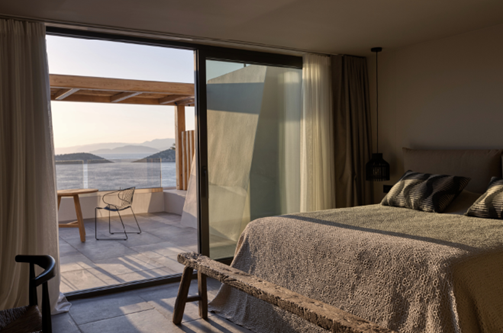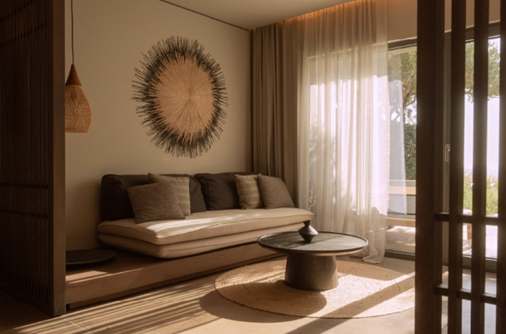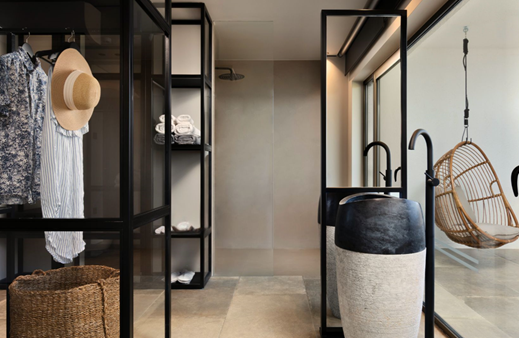The Disappearing Wardrobe
Hotel room design is ever changing. In the mid to high-end market, grammability i.e. the ability of a room, and the guest within it, to look good on Instagram now takes centre stage. Modern fixtures such as bedside pendants and flattering illuminated mirrors have become common additions in mid to high end hotels. So has inventory such as boho wall art, retro alarm clocks, and even neon quotes or graphics which appeal to Gen Z whilst hopefully not offending their parents. On the other hand, readers may notice some items are conspicuously absent in new hotel rooms this year, and one item in particular - the wardrobe.
An open storage unit with a short, perpendicular rail and a couple of hangers can give a room a sense of openness, perhaps even a loft lifestyle buzz that guests do not experience in their bedroom at home. Leisure travellers are likely to bring their favourite 'going out' clothes with them when they travel. Having those clothes on display for many will create a sense of playful excitement rather than detract from the high-class nature of their environment.
In 2023, business travel was the reason for 17% of overseas visits to the U.K. This is a substantial share of the market but it is a decrease from 24% ten years ago.[1] Room design trends between business and leisure have grown increasingly apart over the same period. Leisure travellers in 2025 are spending more per average stay. But they expect something quirky or unique about their experience. When looking for hotel stays, search engine terms such as 'vivid', 'sonder' and even 'trippy' are on the up.[2] This trend will sway many owners and designers to prioritise features that appeal to weekend leisure visitors over features for business users such as an upright chair and proper working desk, which in many hotels has already bitten the dust.
The phasing out of wardrobes clearly has non-design related reasons behind it too. In city centre hotels, space is a premium. Goodtravel Management found in their 2024 study that in the London borough of Hackney, the most expensive borough in the city, the average cost of a hotel room per night was £606. This equates to £2.66 for every square foot of hotel room space. The cost in the second and third most expensive cities was £314 per night in Edinburgh (£1.05 per square foot) and £285 per night in Birmingham (£1.14 per square foot).[3]
Condé Nast Traveller interviewed the design director at Quadrum Global Carolina Eguiguren on the disappearance of the wardrobe's cousin, the dresser (known as the chest of drawers this side of the Atlantic). Ms Eguiguren oversees design of the Arlo Hotels brand in the U.S.A. where rooms are between 180 and 200 square feet. "It's really like shipbuilding. You want to use all your corners. We have found that dressers and closets are not the most important, but bed sizes are. We prioritize a king bed over a dresser."

For hotels where brand or hotel management is vested in a separate business to the owner, the economic incentive on the owner is higher than that on the manager to keep opening capex and cyclical refurbishment costs down. Shortening the list of FF&E (fixtures, fittings and equipment) that an owner must pay for is one way of doing this. Owners and managers' interests are generally aligned in boosting room appeal and, by extension, the occupancy rate and revenue of a hotel. However, where removing in-room amenities lowers a manager's brand standards, or where refurbishment is requested too frequently, it might be lawfully resisted under the contracts between them.
It is well known that simplifying hotel room design also leads to a reduction in housekeeping costs. Certain budget brands have redone their standard room configuration over the last twenty years to remove furniture doors amongst other measures such as installing wet rooms in order to shave minutes and seconds off turnaround times. Cutting a target turnaround time down from 27 minutes to 24 minutes for a checkout clean seems like a modest saving to warrant ripping out and replacing FF&E. But with economies of scale, this can yield material savings for operators in the long run. Cynics might say that this 'wardrobeless' fad is driven by space and cost-cutting alone. But that would not explain why wardrobe doors are being taken off their hinges even in the high-end luxury resort market.

Elena Stamati, brand manager of luxury Greek hotel chain Bluegr tells us that their open-plan room design reflects their philosophy of minimalism and elegance, encouraging a seamless flow between spaces. At their Minos Palace Hotel in Crete, open robe storage has been chosen even in a 400 square foot suite where space is less of a constraint. Their hotel rooms, pictured above and below, are designed with a focus on modern luxury and sustainability. In Ms Stamati's words, "This openness fosters a sense of freedom and connection to the surroundings, making the room feel more expansive and serene. By eliminating traditional barriers, we create a more intimate, relaxing atmosphere that aligns with our vision of modern luxury and enhances the overall guest experience."
Lighting too plays a key role in creating ambiance and comfort in modern rooms. Minos Palace Hotel rooms are equipped with a KNX smart system that allows for seamless control of lighting to match guests' moods and preferences.

When asked if design budget or the longevity of FF&E influences room design, Ms Stamati told us that they prioritise longevity and sustainability in every design decision. Fixtures and furniture are carefully chosen for their durability and timeless appeal to ensure that their spaces remain luxurious and functional for years to come. The artwork is curated by a team of experts, led by Bluegr's CEO Ms. Gina Mamidaki. Each piece is thoughtfully selected to complement a room's design, evoking a sense of place and making a commitment to elegance and cultural authenticity.

Ultimately there is not one size fits all in hotel room design and business decisions by owners in what to invest in. The free-standing, creaking wooden box that wouldn’t look out of place in Downton Abbey will continue to add charm to a rustic European city boutique or a rural retreat. For guests who already live in modern surroundings, an old fashioned wardrobe could be the very thing that gives them the desired change of scene and piques their excitement with what lions and witches might lay beyond. Although the big wooden box is long outdated for modern hotel rooms. Are the sleek, sliding doors of a built-in wardrobe now also behind the curve?


